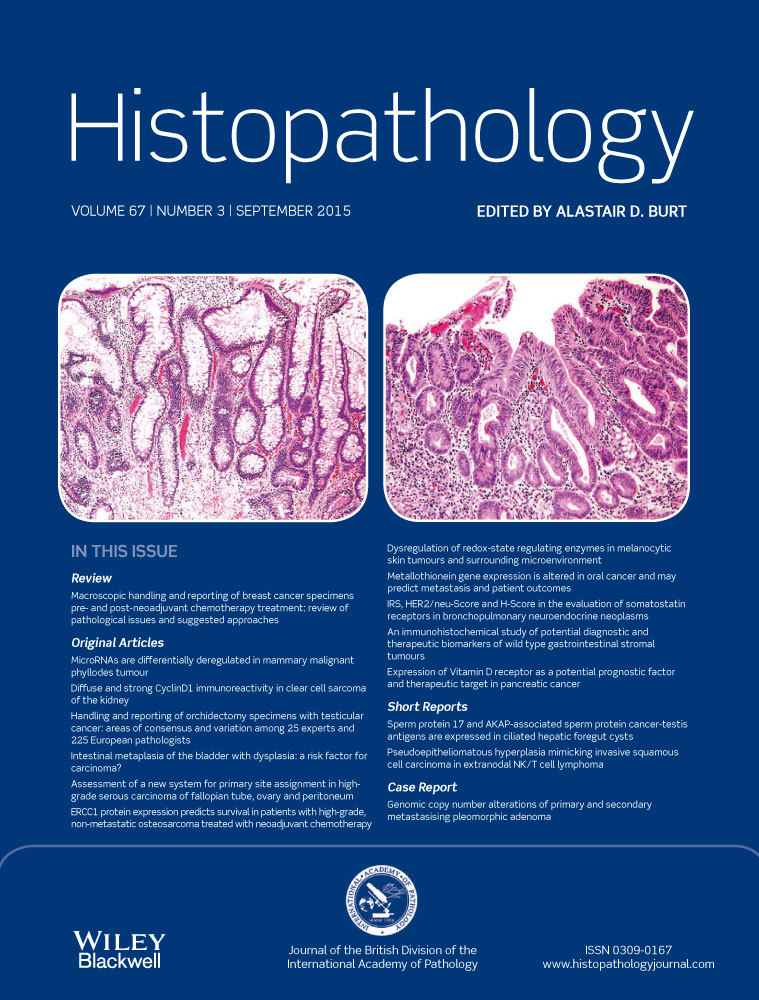Genomic copy number alterations of primary and secondary metastasizing pleomorphic adenomas
Abstract
Aims
Metastasizing pleomorphic adenoma (MPA) is a rare tumour, and its mechanism of metastasis still is unknown. To date, there has been no study on MPA genomics. We analysed primary and secondary MPAs with array comparative genomic hybridization to identify somatic copy number alterations and affected genes.
Methods and results
Tumour DNA samples from primary (parotid salivary gland) and secondary (scalp skin) MPAs were subjected to array comparative genomic hybridization investigation, and the data were analysed with NEXUS COPY NUMBER DISCOVERY. The primary MPA showed copy number losses affecting 3p22.2p14.3 and 19p13.3p123, and a complex pattern of four different deletions at chromosome 6. The 3p deletion encompassed several genes: CTNNB1, SETD2, BAP1, and PBRM1, among others. The secondary MPA showed a genomic profile similar to that of the primary MPA, with acquisition of additional copy number changes affecting 9p24.3p13.1 (loss), 19q11q13.43 (gain), and 22q11.1q13.33 (gain).
Conclusion
Our findings indicated a clonal origin of the secondary MPA, as both tumours shared a common profile of genomic copy number alterations. Furthermore, we were able to detect in the primary tumour a specific pattern of copy number alterations that could explain the metastasizing characteristic, whereas the secondary MPA showed a more unbalanced genome.




